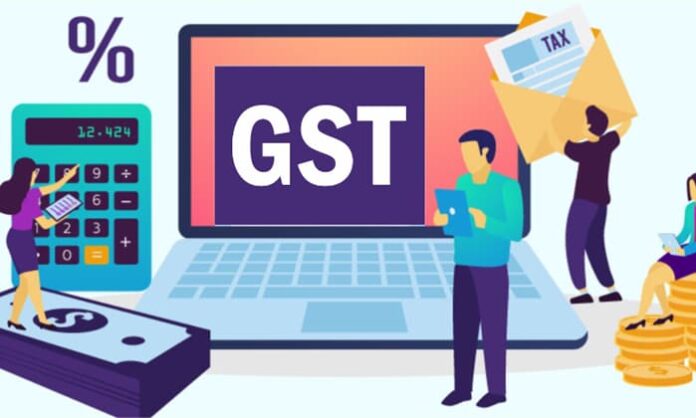By News365 Times Desk
In his address to the nation on the eve of sweeping reductions and abolition of GST rates on most items of daily use, Prime Minister Narendra Modi underlined that the poor, middle class, and emerging “neo-middle class” would be the prime beneficiaries of the reforms. The revised rates, effective 22 September 2025, were intended to bring relief to households and stimulate broader consumer welfare.
However, ground realities paint a different picture—particularly in the case of confectioners and snack traders. Instead of passing on benefits to consumers, many confectioners are poised to enjoy a double bonanza: reduced GST rates coupled with cheaper raw materials.
Double Gains for Confectioners
GST on namkeens (salted snack items) has been slashed from 12% to 5%, bringing them on par with sweets, already in the 5% slab. Yet, confectioners contacted by News365 Times admitted they will not reduce consumer prices. Their margins, already boosted by daily sales in lakhs, will now expand further.
To add to this, raw materials—including several essential ingredients—have also seen GST either cut to 5% or abolished altogether. In short, the GST reforms are enriching confectioners while the intended beneficiaries—the consumers—remain largely untouched.
The Missing Consumer Benefit
Central and state GST departments must immediately ensure that benefits are passed to customers. Measures can include:
- Affidavits from GST-registered assessees confirming that they will lower prices in line with tax reductions.
- Mandatory display of comparative prices—before and after 22.09.2025—on shopfronts.
- Commitment boards in establishments assuring customers that benefits are fully transferred.
At present, many confectioners avoid transparency altogether. They refuse to issue GST invoices, handing out handwritten slips without tax breakdowns. Worse, many resist card payments, citing “machine malfunction” to keep sales off the books and evade compliance.
Such practices must be addressed with urgency:
- Non-issuance of GST invoices should be treated as a cognisable, non-bailable offence.
- Every GST-registered trader must provide card payment options—using dual POS machines to prevent excuses.
Broader GST Anomalies Needing Reform
The September reforms also exposed irrationalities in the GST system that demand correction:
- Cars vs. Infrastructure Needs: While GST on economical cars has been reduced from 28% to 18%, India’s strained city infrastructure hardly supports more cars. Instead, GST should discourage car sales and promote eco-friendly auto-rickshaws as private vehicles. Former Mexican Ambassador to India Melba Pria famously used a CNG auto-rickshaw as her official car in Delhi. Indian ministers should adopt similar symbols of practicality and sustainability.
- Car Parts Disparities: Earlier, clutch plates and clutch bearings were taxed at different slabs (18% and 28%), highlighting irrational classification. It is unclear if this anomaly has now been resolved.
- Cultural Paradox in Saree Taxation: Normal fabrics are taxed at 5%, but sarees face 18%. With sarees symbolizing India’s cultural heritage, they should be taxed at the same 5% slab as other fabrics and affordable readymade garments.
- Over-classification of Goods: With nearly 10,000 commodity categories, consumers are left confused about applicable rates. A streamlined GST matrix is urgently needed.
Tackling Input Tax Credit Misuse
The Input-Tax Credit (ITC) system has long been exploited. Unsold GST invoices are illegally traded between customers, traders, and manufacturers to generate fake credits, fuelling black money circulation. With lowered GST rates, policymakers should seriously consider abolishing ITC for manufacturing sectors, limiting it only to tradable goods. Expenses and depreciable assets should not qualify for ITC claims.
Petroleum, Luxury Items, and Uniform Pricing
- Cess on luxury goods should be replaced by higher GST slabs in multiples of 30%.
- Petroleum products must come under GST to eliminate the shocking disparities in fuel prices across states. For example, on 09.05.2025, petrol was priced at ₹82.46 per litre in Andaman & Nicobar, but at ₹109.60 in Andhra Pradesh, with Delhi at ₹94.77. Uniform GST inclusion would bring parity and simplify fuel pricing in rounded figures.
Government Services and GST: A Contradiction
It is illogical for government services like railways and postal departments to be both inside and outside GST simultaneously. Cases have already arisen where government departments themselves paid penalties for late GST filings. The better solution: exempt all government services from GST and recover the cost through rationalized, rounded service charges (e.g., Speed Post ₹20/30 slabs instead of ₹17).
Other Urgent Reforms
- Abolish the little-used TDS on GST, or automate its crediting in GST accounts.
- Reduce service sector GST from 18% to 5%, particularly for MSMEs.
- Bring lawyers under GST for parity with other professional services.
- Increase the exemption threshold for service providers to ₹50 lakh, as once promised.
The 22.09.2025 GST reforms are a landmark attempt to ease burdens on households. Yet without strict enforcement, consumers risk being left behind while confectioners and traders pocket the gains. Unless governments ensure price reductions reach the public, the reforms will merely widen profit margins instead of alleviating the cost of living.
India’s GST story must evolve from complexity and loopholes into a regime that is transparent, equitable, and consumer-centric.



